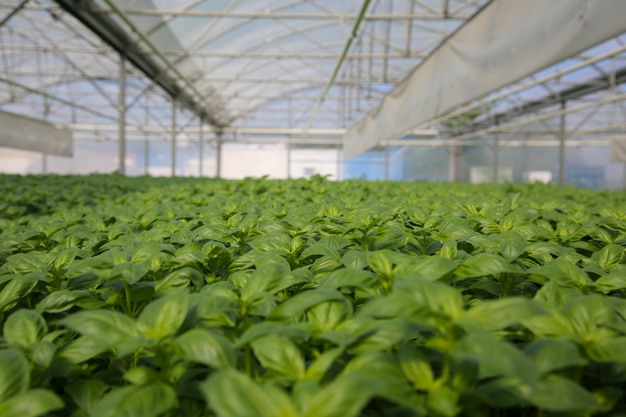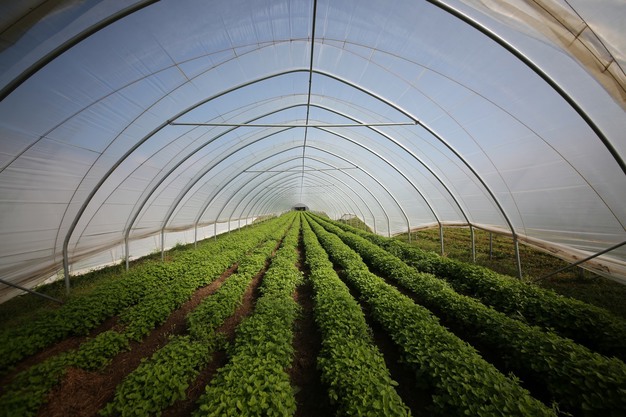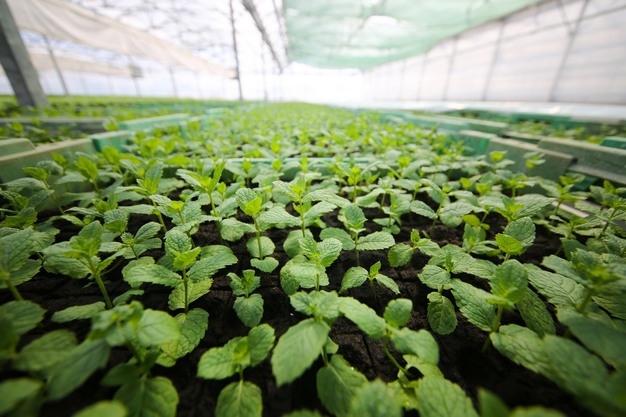The German cut herb season has been in full swing for three months now. "It rained a lot in May, especially in the west, but there were fewer problems with extensive rainfall in the east and north, so we were able to compensate for the missing quantities accordingly. Meanwhile, demand rose sharply at the start of the German harvest, particularly for the main crops such as dill, flat-leaf parsley and chives. As a result, we had to make additional imports from Spain, Italy, and Morocco throughout May to meet the high demand. We had the advantage that the quality of the imported goods was very good right up to the end. In this respect, there was a smooth transition between seasons," outlines Artur Lammert, Co-Managing Director at Dreesen Kräuter, based in Bornheim.
 © Dreesen Frische Kräuter GmbH & Co. KG
© Dreesen Frische Kräuter GmbH & Co. KG
Basil in protected cultivation.
Meanwhile, prices have remained relatively constant, continues Lammert. Compared to the previous year, there was only a slight price increase, which in turn was due to the further rise in costs, particularly in the area of labour. "We continue to see pleasing growth in demand, particularly for classics such as dill, mint and flat-leaf parsley. The same applies to basil, although the focus here is primarily on regular basil, while the unusual varieties are stagnating or declining slightly." In addition to cut herbs of all kinds, cresses are the Bornheim-based company's second product segment. "The cresses, which we can offer all year round from German cultivation, have developed into a constant range. There has been neither a significant increase nor a decline. We have also been able to achieve consistent sales in the current financial year."

The management of Dreesen Kräuter at this year's Fruit Logistica. In terms of cost savings, the company is now gradually benefiting from the investments in cultivation and processing technology that have been made in the last years, according to Lammert (r).

Lemon balm
Seasonal transition in autumn
The Dreesen Kräuter team is currently preparing for the upcoming transition to the autumn season. This is because the cut herbs will probably still be available from the company's own German outdoor cultivation for around two months. Lammert: "If the weather remains mild and we are spared extremes, we can normally offer German herbs until the middle/end of October. However, this is also highly dependent on the product and location. With a product like dill, we usually have to resort to imported goods a little earlier, while mint, for example, is a little more robust and can therefore be sourced from German cultivation for a little longer. Nevertheless, every year is different: There have already been years like 2022, in which we were able to trade plenty of German herbs until mid-November, while last year we had to source them relatively early from abroad," they conclude.

Mint
Photo credit: Dreesen Frische Kräuter GmbH & Co KG
For more information:
Artur Lammert
Dreesen Frische Kräuter GmbH & Co KG
Rosental 30
53332 Bornheim
Tel.: (0 22 27) 91 87 68
Fax: (0 22 27) 91 87 13
artur.lammert@dreesen.de
http://www.dreesen.de
